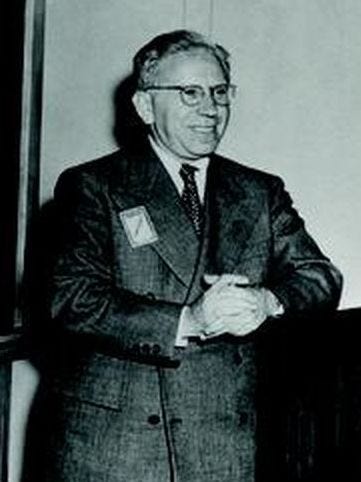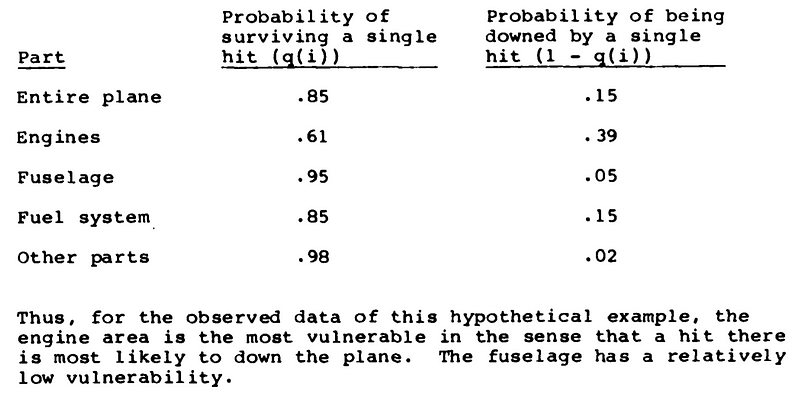Unveiling the Invisible: The Genius of Abraham Wald's Insights
Written on
Chapter 1: The Power of Perspective
Throughout history, there have been remarkable individuals who possess the ability to perceive fundamental truths that often go unnoticed until highlighted. One such figure is Abraham Wald.
In 1943, Allied bombers faced devastating losses due to enemy fire from Nazi forces. The U.S. Air Force was under immense pressure to enhance the survival rates of their pilots and aircraft. A straightforward solution might have been to increase the armor on the planes. However, additional armor would also bring the challenge of increased weight, compromising fuel efficiency and maneuverability. Therefore, it was crucial to apply armor judiciously.
Wald, a brilliant Hungarian mathematician of Jewish descent, fled the Nazi occupation of Austria and emigrated to the United States in 1938. He became part of the faculty at Columbia University and was one of the founding members of the Statistical Research Group (SRG), a classified initiative that enlisted top statistical experts to tackle urgent military issues. Among its members were luminaries like Milton Friedman, George Stigler, and Norbert Wiener.

Ironically, Wald was not permitted to view the classified documents he authored due to his nationality, leading to jokes about the need for someone to retrieve pages from his grasp upon completion. His mere presence in the SRG highlighted the extraordinary nature of his intellect.
Assigned the challenge of determining how best to shield aircraft from enemy attacks, Wald, despite his background in pure mathematics, ventured into the realm of applied mathematics. This shift proved fortuitous, as we will discover.
Wald analyzed data concerning bullet holes on returning planes, revealing a non-uniform distribution of damage. A simplified version of his findings, derived from hit count tables and area estimates in his SRG reports, is as follows:

Many assumed that additional armor should be positioned where the most damage was observed, an interpretation based on the assumption that the sample was representative. However, Wald, comfortable with abstract concepts, was not swayed by seemingly "obvious" facts. He recognized that the absence of bullet holes likely indicated the fate of the planes that did not return; specifically, those that sustained hits to their engines were missing. Therefore, the armor needed to be placed on the engines.
This insight has come to exemplify the concept known as survivorship bias, a mistake that arises when the studied sample is incomplete, leading to erroneous conclusions. This bias reflects a fundamental truth: those who have perished cannot share their experiences, even though they may be critical.
The finance sector often illustrates this phenomenon, as failed funds are usually omitted from performance evaluations, resulting in returns that only reflect surviving, successful funds. A similar instance can be found in healthcare, where treatment efficacy might overlook individuals who exit due to deteriorating health or mortality.
Wald’s memos for the SRG are notably technical and devoid of direct references to survivorship bias. Yet, utilizing information about bullet impacts on surviving aircraft and general observations about those lost, he cleverly formulated a plausible model to estimate the damage to missing planes. He aimed to quantify the likelihood of a craft surviving a specific number of hits:

His analysis culminated in the following summary:

In 1950, Wald published a new book titled Statistical Decision Functions, leading to an invitation from the Indian government to deliver a series of lectures. Although he typically did not prioritize making his work accessible, he seized this opportunity for adventure and to share his methods with a broader audience. Tragically, he and his wife perished when their plane crashed in foggy mountainous terrain in southern India.
Wald's contributions are credited with saving countless pilots and crew members, not only during World War II but in subsequent military engagements as well. Oskar Morgenstern, an economist and co-founder of game theory, expressed the profound loss to the scientific community when Wald passed:
"Abraham Wald was taken from the scientific community and his many personal friends at the height of his life. He had already contributed immensely to his fields and was brimming with new ideas awaiting development. While these ideas are now lost to us, the work he completed will continue to guide and instruct generations to come."
Further Reading
- Mangel, M., & Samaniego, F. (Year). Abraham Wald’s Work on Aircraft Survivability. Scientific American.
- Mullainathan, S. (Year). The Perils of “Survivorship Bias”. [Link]
- Ellenberg, J. (Year). How Not To Be Wrong: The Power of Mathematical Thinking. [Link]
- Casselman, B. (Year). The Legend of Abraham Wald. [Link]
In the video titled "Seeing the Invisible | Op-Docs | The New York Times," explore the intricate details of how unseen factors can shape our understanding of reality.
The second video, "Seeing the Invisible: Augmented Reality Art Exhibit at Royal Botanical Gardens," showcases how augmented reality can reveal hidden layers of experience in our environments.
Thank you for reading! If you found this piece engaging, feel free to click the "Applause" icon as often as you'd like. You can also subscribe to receive my latest content directly in your inbox.